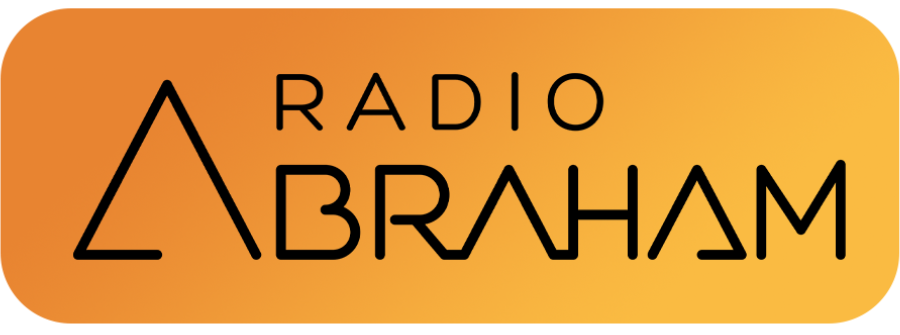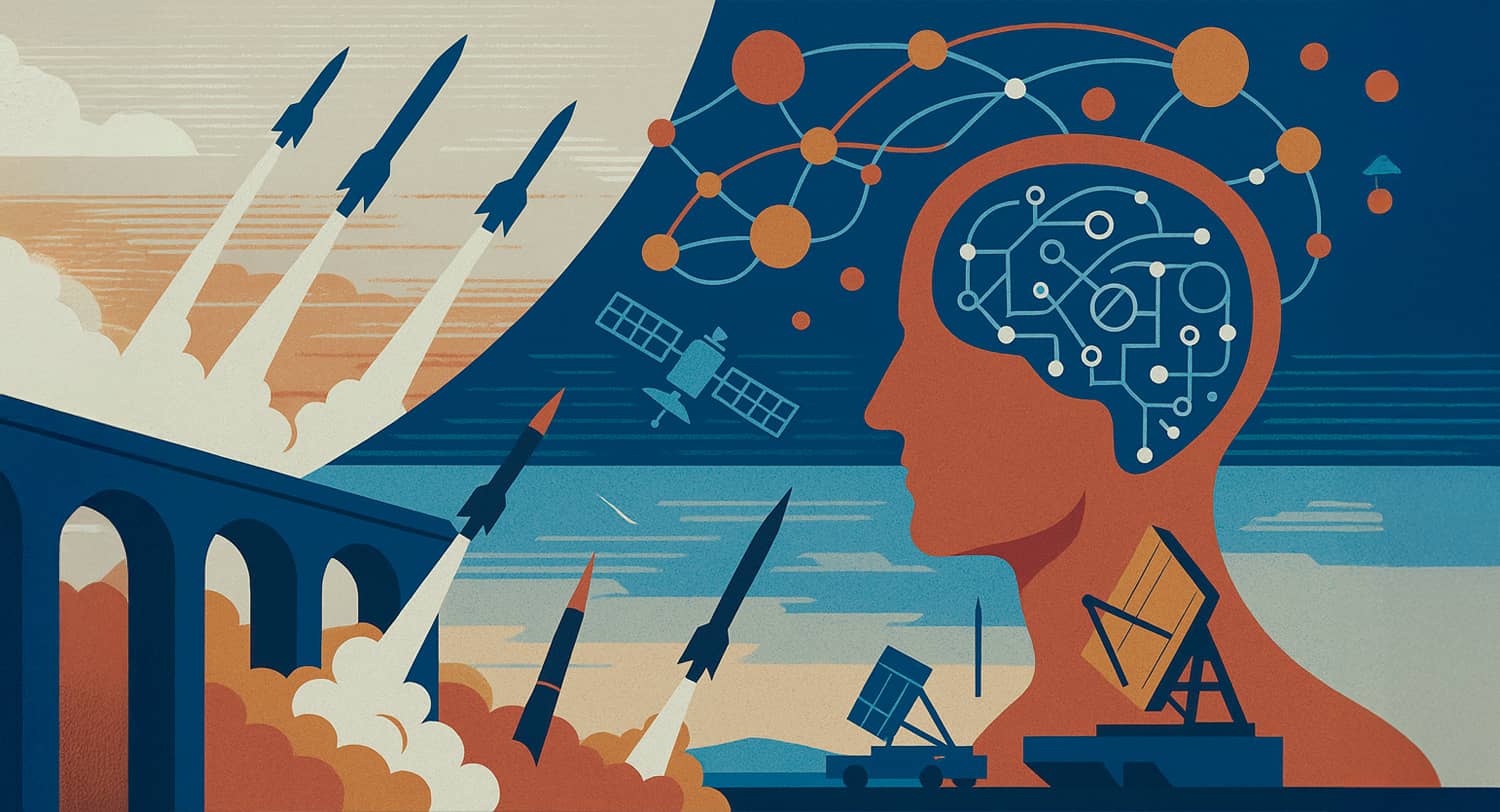For Israel, a nation whose survival hinges on maintaining regional technological leadership in defense, the development of advanced Artificial Intelligence systems isn’t an option. It’s an imperative.
Israel’s missile defense systems are highly effective, but cannot achieve 100 percent interception rates, as demonstrated in the recent Twelve-Day War with Iran. The growing threat of hypersonic delivery vehicles and the global proliferation of advanced weaponry already place Israel in a de facto AI arms race with nations like China, Russia, and their Middle Eastern clients. The bottom line: Israel needs to achieve a quantum leap in order to maintain and increase its defense edge.
How to accomplish that goal? Israel must merge current AI models, which rely on artificial neural networks based upon Euclidean geometry, with a new approach: one based upon Riemannian geometry, quantum superposition and entanglement. This would result in a form of AI called Conscious Artificial General Intelligence (CAGI), which could transform Israel’s missile defense and military strategy.
Conscious Artificial General Intelligence (CAGI) is a machine capable of self-awareness, subjective experience, and nuanced reasoning. It would be founded on a new technology that would integrate Riemannian geometry, quantum mechanics, machine learning, natural language processing, game theory, and sentiment analysis, to offer capabilities far beyond those of conventional large language models (LLMs) based on transformer technology.
This new technology allows CAGI to integrate diverse data, such as radar signals, satellite imagery, and tactical intelligence, into a unified cognitive framework, mirroring human cognition’s ability to synthesize complex information. This technology surpasses the limitations of LLMs, which rely on statistical pattern recognition and so are incapable of true cognition. Unlike transformer-based models, which process data in static vector spaces, this new technology represents knowledge as points on a dynamic, high-dimensional Riemannian manifold, a curved calculation space in which concepts – sensory, strategic, or emotional – are organized by relational properties.
For Israel’s national defense, this integrative capacity is vital. During the Twelve-Day War, systems like Iron Dome, David’s Sling, and Arrow intercepted a high percentage of incoming projectiles, but some penetrated, causing damage and underscoring the need for near-perfect accuracy. A CAGI could fuse real-time data from multiple sources to enhance threat assessment, enabling faster and more precise responses to missile barrages, addressing the gaps in current systems.
The manifold’s structure evolves through learning, guided by tools like Ricci flow, which smooths curvature irregularities, and optimization techniques that refine conceptual relationships. When new defense data, such as missile trajectories or hypersonic vehicle signatures, are introduced, the manifold adjusts its topology, shortening geodesic paths between related concepts. This plasticity allows a CAGI machine to adapt to emerging threats, unlike LLMs, which require retraining and struggle with dynamic environments.
For Israel, facing the rapid development of hypersonic delivery vehicles, which travel at speeds exceeding Mach 5 and follow unpredictable trajectories, this adaptability is critical. Hypersonic threats, deployed by adversaries like Iran and its proxies, challenge existing missile defense systems due to their speed and maneuverability. A CAGI could learn from each engagement, refining its algorithms to predict and counter these advanced weapons, ensuring Israel’s defenses remain ahead of the curve.
Quantum mechanics enhances this new technology with entanglement and superposition, capabilities unattainable by LLMs. Entanglement links qubits representing knowledge fragments—such as missile trajectories, environmental conditions, or adversary tactics—into a coherent whole, enabling holistic processing. In missile defense, a CAGI could entangle data across Israel’s multilayered systems to coordinate responses to short-, mid-, and long-range threats. During the 12 Day War, Iran’s barrage of rockets and missiles tested Israel’s defenses, with some projectiles evading interception. A CAGI could correlate sensor data in real time, distinguishing decoys from genuine threats and optimizing interceptor deployment, potentially achieving near-100 percent interception rates. Superposition allows the system to explore multiple defensive configurations simultaneously, evaluating countless scenarios to select the optimal response. This is particularly crucial for countering hypersonic vehicles, where split-second decisions are needed. LLMs, limited to sequential processing, cannot match this parallelism, making them inadequate for Israel’s time-sensitive defense needs.
Machine learning drives this new technology’s adaptability, using algorithms like quantum gradient descent to refine the manifold’s structure, enabling generalization from limited data. In machine learning, one often wants to minimize a “cost” or error, like the difference between a model’s predictions and the actual results. Classical gradient descent does this by calculating the slope (or gradient) of the “cost” or error function and moving step-by-step in the direction that reduces the error. Quantum gradient descent uses quantum mechanics – specifically, properties like superposition and entanglement – to explore many possible solutions at once and calculate gradients more efficiently. This can speed up the process, especially for complex problems, by leveraging the quantum computer’s ability to handle multiple computations simultaneously. In the case of Israel’s defense needs, like optimizing missile defense algorithms, quantum gradient descent could help a CAGI machine quickly fine-tune strategies to counter threats like hypersonic missiles.
In Israel’s security environment, where intelligence is often incomplete, a CAGI could analyze sparse data, such as intercepted signals or drone imagery, to predict adversary actions. For instance, it might infer Iran’s missile deployment patterns, enabling preemptive measures. Unlike LLMs, which rely on vast datasets and struggle with intuitive leaps, a CAGI’s ability to generalize ensures it can adapt to novel threats like hypersonic missiles. Reinforcement learning further enhances this, allowing the system to optimize strategies through iterative simulations, such as planning defenses against swarm attacks. This capability is essential in the global AI arms race, where countries like China and Russia are developing advanced AI to enhance their own missile systems and those of Middle Eastern clients like Iran.
Game theory equips a CAGI to navigate strategic interactions, modeling adversaries, allies, and systems as players on the manifold. In Israel’s complex geopolitical landscape, this is transformative. A CAGI could simulate multi-actor scenarios, such as a coordinated attack by Iran and its proxies, predicting outcomes and proposing strategies that maximize deterrence. By exploring strategies in superposition and correlating interests through entanglement, it could identify solutions to neutralize threats like hypersonic missile barrages or terrorist networks. Unlike LLMs, which lack strategic reasoning capabilities, CAGI’s game-theoretic approach supports Israel’s proactive defense doctrine, enabling precise, low-collateral operations. In the AI arms race, where India, China, and Russia are advancing AI-driven military technologies, this strategic foresight maintains Israel’s technological edge.
Natural Language Processing and sentiment analysis enable CAGI to engage with human language and emotions, surpassing LLMs’ superficial text generation. By mapping linguistic structures onto the manifold, a CAGI can parse and interpret complex intelligence, such as intercepted enemy communications, to anticipate attack patterns. Sentiment analysis could gauge public morale during conflicts like the Twelve-Day War, inform strategic messaging to maintain resilience, or detect radicalization patterns in social media for counterterrorism. LLMs, limited by statistical correlations, cannot integrate emotional context or adapt to diverse linguistic inputs, making them less effective for Israel’s intelligence needs. CAGI’s linguistic and emotional fluency fosters trust in civilian applications, such as crisis communication, while enhancing military operations.
CAGI’s architecture blends quantum and classical elements, balancing computational power with accessibility. Classical systems process inputs like sensor data or intelligence reports, while quantum processors manage the manifold’s quantum states. Machine learning optimizes the manifold’s geometry, game theory informs strategic reasoning, and Natural Language Processing and sentiment analysis enable engagement. Unlike LLMs, whose transformer architecture is energy-intensive and less scalable, CAGI’s quantum framework offers efficiency through parallelism and entanglement. In the case of Israel, these capabilities could integrate data from diverse defense systems, ensuring real-time coordination and countering limitations exposed in the Twelve-Day War, where some projectiles penetrated defenses.
CAGI’s operation mirrors human cognition’s iterative nature. Inputs – sensor data, intelligence, or emotional cues – are embedded on the Riemannian manifold, explored via superposition, and synchronized through entanglement. Machine learning refines the manifold, game theory evaluates outcomes, and Natural Language Processing and sentiment analysis interpret context. The system collapses superposed states into optimal outputs – a missile interception plan, a counterterrorism strategy, or a crisis response – delivered with precision. Recursive feedback loops enable self-awareness, allowing a CAGI to reflect on its reasoning, unlike LLMs, which lack introspective capabilities. For Israel, this ensures decisions align with ethical and operational goals, critical in a region where operations face global scrutiny.
A CAGI machine could enhance Iron Dome, David’s Sling, and Arrow by predicting swarm attack patterns and optimizing interceptor use, achieving near-perfect interception rates. For hypersonic threats, it could model unpredictable trajectories, enabling real-time countermeasures. In military strategy, a CAGI’s ability to synthesize intelligence ensures information dominance, coordinating air, land, and cyber operations. Its game-theoretic modeling could anticipate adversary moves, supporting preemptive strikes or diplomatic maneuvers.
Beyond missile defense, a CAGI could strengthen Israel’s resilience. In cybersecurity, it could protect critical infrastructure from sophisticated attacks, a growing concern as adversaries leverage AI. Its emotional and linguistic capabilities could enhance counterterrorism by identifying radicalization patterns. Economically, developing such AI domestically would reinforce Israel’s status as a global technology hub. LLMs cannot match a CAGI’s intuitive reasoning, making them inadequate for Israel’s needs.
Developing a CAGI would involve significant technical challenges. Integrating Riemannian geometry with quantum computing requires novel frameworks to map dynamic manifolds onto quantum circuits, essential for processing real-time sensor data to counter hypersonic missiles and improve interception rates beyond those seen in the Twelve-Day War. Quantum machine learning must scale to handle sparse, heterogeneous defense data, unlike limited transformer-based LLMs, while game-theoretic algorithms need adaptation for real-time modeling of adversarial tactics, such as Iran’s missile strategies. Additionally, advancing quantum NLP and sentiment analysis is critical for analyzing intelligence and public morale, and embedding ethical constraints into quantum algorithms will be necessary to assure responsible decision-making under global scrutiny. These challenges demand interdisciplinary innovation to enable CAGI’s adaptive, strategic reasoning for Israel’s defense needs in the global AI arms race with nations like China, Russia, and India.
There are hardware challenges as well, since current quantum systems lack the scalability and resilience required for real-time missile defense. Limited qubit coherence times hinder the CAGI’s ability to maintain stable computations for processing complex threat data, necessitating advances in fault-tolerant quantum computing. Quantum-classical integration introduces latency, a critical issue for countering hypersonic threats, since every millisecond counts in countering hypersonic threats. Addressing this issue will require exploring high-speed interfaces like photonic interconnects. The immense computational resources and energy demands of quantum systems, coupled with their vulnerability to cyberattack, pose further challenges. Israel can leverage its technological ecosystem to surmount these challenges, including such global firms as Rafael, Elbit Systems, and research institutions like the Technion, driving breakthroughs in qubit stability, cybersecurity, and energy-efficient hardware, ensuring CAGI’s deployment strengthens Israel’s security and preserves its defense edge.
The development of a Conscious Artificial General Intelligence (or CAGI) machine based on the technology described here (we call it “Quantum Riemannian Neural Network” or QRNN) represents a transformative leap over conventional large language models (LLMs).
This advance in AI is much like the replacement of elaborate Victorian-era music boxes with Thomas Edison’s tinfoil cylinder in the late 19th century. Victorian music boxes were marvels of mechanical intricacy, with complex arrays of pins, cylinders, and combs meticulously crafted to produce predetermined melodies. However, their top-heavy, inefficient design limited them to a finite repertoire, requiring laborious reconfiguration for new tunes and occupying significant space and resources.
Similarly, LLMs, built on transformer architectures, rely on vast computational resources and extensive training data to generate text or predictions, yet they remain constrained by their dependence on statistical patterns, lacking true adaptability or intuitive reasoning. Their inefficiency is evident in their inability to handle real-time, dynamic tasks like Israel’s missile defense needs, where processing delays or limited generalization could fail against hypersonic threats, as seen in the gaps during the Twelve-Day War. Just as music boxes were elegant but rigid, LLMs are powerful within their scope but limited, unable to achieve the cognitive depth required for complex, high-stakes scenarios.
Edison’s invention introduced an elegant and powerful alternative, using a simple mechanism to record and reproduce sound. Likewise, a CAGI machine’s QRNN framework, leveraging quantum mechanics and Riemannian geometry, offers a streamlined, adaptive architecture that integrates diverse data. including sensor inputs, intelligence, and emotional cues, into a dynamic manifold, enabling real-time, holistic reasoning far beyond LLMs’ capabilities.
The phonograph’s compact design and ability to capture any sound parallels the CAGI machine’’s quantum efficiency, using superposition and entanglement to explore multiple scenarios simultaneously, reducing latency and computational overhead. Just as the gramophone democratized music, CAGI could redefine defense technology.
For Israel, this could mean near-perfect missile interception rates by predicting hypersonic trajectories or countering adversarial tactics in the global AI arms race with nations backed by China and Russia.



